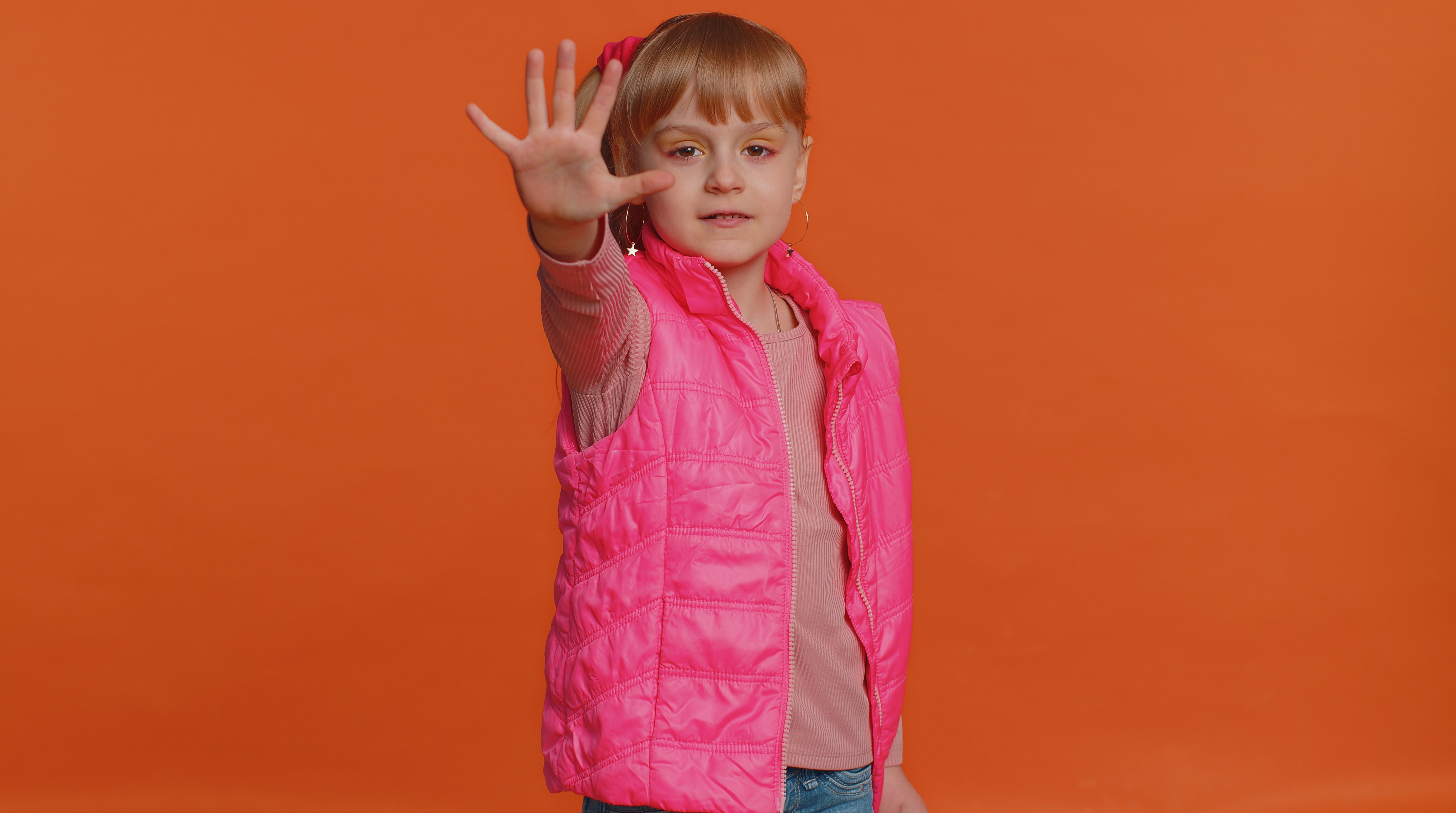Teachers and parents often coach children in social situations by saying, “Use your words!” But the truth is, when emotions are high, it can be challenging for young children to retrieve the words they need. Teaching children the stop sign reduces their frustration in emotionally heightened social situations. This useful sign gives the child something meaningful to do with his hands and is also an important tool for children who may be more passive and need to learn to assert or protect themselves. Quiet children respond well to this concrete way of defending themselves.
Signs tap into the child’s natural desire to move
Early learning is all about movement and the stop sign allows a child to express himself with his whole body. It’s physically satisfying to make the stop sign--it can be done with force and power!
The stop sign promotes self-regulation and impulse control
Throughout early childhood, children are learning to control their impulses. Hands are immediate tools of learning and natural tools of expression. That’s why it is so common for children to push, grab and hit when they are frustrated. We can put powerful intentional communication right into the child’s hands by teaching him to use the stop sign during social conflict. Children really like to do the stop sign. It makes them feel powerful and helps them find control.
Teach the stop sign through games
- Play a follow-the-leader game while you walk or march together, taking big steps, fast steps or tiny steps. Tell the children that when they see the stop sign they must freeze in place. Explain that sign language is a code and that they can listen with their eyes. Let children take turns being the leader and directing the stop sign for everyone else to follow.
- Invite children to dance and move their bodies to music. When the music stops, show the stop sign and let all the children freeze in place until the music returns.
The stop sign promotes independence and a peaceful auditory environment
Once you start using the stop sign with children, you’ll see how quickly and easily they begin to use it, too. Children respond well to sign language because seeing a sign and knowing what to do without being told promotes pride and independence. Sign language allows you to give a quiet or silent prompt. You can sign stop from all the way across the room without having to call out. Signs support a calm and peaceful auditory climate.
~~~~

This post was contributed by Carol Garboden Murray, author of Simple Signing for Young Children. Carol has been working with children and families for many years in infant, toddler and preschool education and early intervention. She is currently the director of child care services at Dutchess Community College in Poughkeepsie, NY. You can visit her at carolgarboden.com or email her at murray@sunydutchess.edu.
Author(s)Carol Garboden Murray
Ashleigh Craven
Ashleigh Craven has a decade and a half of diverse category experience from agency communications to athletic apparel to automotive to education, developing and executing communication strategies in both traditional and social media. She has supported national product launches and corporate events for the likes of Soffe, Buick, Chevrolet, Wake Forest University , Kaplan, and others. She has an BA from the University of Michigan in English and Communication Studies and an MA from Wake Forest University, where she focused her studies on argumentation and presidential rhetoric and speechwriting. She served as director of marketing for Gryphon House from 2017- 2020.

